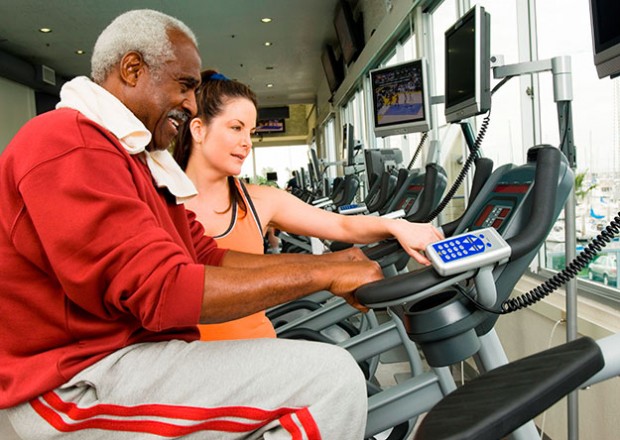Kauai Physical Therapy Blog
Home of Action Physical Therapy: Kauai's Premier Physical Therapy and Personal Fitness Clinic
Manual Therapy
Motorized Stationary Bike May Help With Stroke Rehabilitation
It seems that exercising on a motorized stationary bike may help boost stroke patients’ brain and motor skills recovery.
 The study included 17 stroke survivors, all who took part in repetitive task therapy, such as relearning how to hold a cup or fork, or how to dress themselves.
The study included 17 stroke survivors, all who took part in repetitive task therapy, such as relearning how to hold a cup or fork, or how to dress themselves.
All patients did 24 exercise sessions over eight weeks. At the end of that time, the patients who used a motorized stationary bike showed a 34 percent improvement in motor skills, compared with a 16-17 percent improvement in the non-motorized stationary bike users.
Earlier research has shown that aerobic exercise helps the brain learn new information, and that forced exercise on a motorized stationary bike benefits Parkinson’s disease patients. Additionally, aerobic exercise may help enhance the brain’s ability to reorganize itself and form new connections, the study authors said.
The motorized stationary bike helped patients with limited mobility to pedal and achieve and maintain the intensity of training believed necessary to affect brain function, the researchers noted.
“Not only are we improving motor recovery with half the amount of task practice but we’re also improving cardiovascular health, and stroke patients often have cardiovascular (problems),” study author Susan Linder, a physical therapist at the Cleveland Clinic, said in a stroke association news release.
“If we can improve motor recovery and cardiovascular health simultaneously, patients can regain lost motor function and improve their quality of life.”
 “The success and popularity of the Tyler Twist led us to develop and evaluate an exercise for golfer’s elbow,” lead research author Timothy Tyler, PT, MS, ATC, said in the release. “The Tyler Twist, a novel exercise using the TheraBand FlexBar, was shown to significantly improve strength and reduce pain for individuals with chronic tennis elbow. This new golfer’s elbow exercise, dubbed the Reverse Tyler Twist, also employs a FlexBar and was found to be effective at reducing the pain for patients suffering from golfer’s elbow.”
“The success and popularity of the Tyler Twist led us to develop and evaluate an exercise for golfer’s elbow,” lead research author Timothy Tyler, PT, MS, ATC, said in the release. “The Tyler Twist, a novel exercise using the TheraBand FlexBar, was shown to significantly improve strength and reduce pain for individuals with chronic tennis elbow. This new golfer’s elbow exercise, dubbed the Reverse Tyler Twist, also employs a FlexBar and was found to be effective at reducing the pain for patients suffering from golfer’s elbow.”

